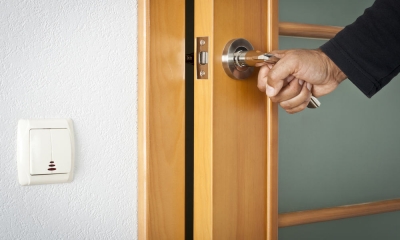
Doors are ubiquitous – we find them almost even where in our everyday lives. We all know the purposes they serve, but have you stopped to think about some intrinsic aspects of it Why is it that the door handle is place at the section that is at the farthest from where the door is hinged if you have ever tried to open the door by pushing it near the centre or worse still near the hinge, you would have surely found it to be way more difficult than doing it near the handle.
Swing along
This is because we need to make the door rotate along hinges, which is dependent on the torque we produce. Torque is proportional both on the force exerted and on the radius of rotation – distance at which force is applied from point of rotation. So if the radius is larger (near where the door handle is normally placed), the force required to produce a certain amount of torque is less than when producing the same amount of torque with a lesser radius (centre of door or near the hinge).
Evolve, revolve
While the swinging doors remain the most popular option to this day, the revolving doors (the ones you might have encountered at a mall) are also gaining popularity. They have been around for over a hundred years now, but still aren’t taken to as well as they should be for various reasons (can be claustrophobic heavy to push and create social awkwardness at times).
Revolving doors, however, have a lot of benefits. The first versions of these were referred to as Tur online Luftzug (German for “door without draft of air), and the reason for that is because revolving doors prevent wind snow, rain, dust and noise from entering the building. Research also suggests that revolving doors Allow for much less air changes than swinging doors and can help save money and energy, especially that involved in heating buildings.
Picture Credit : Google




